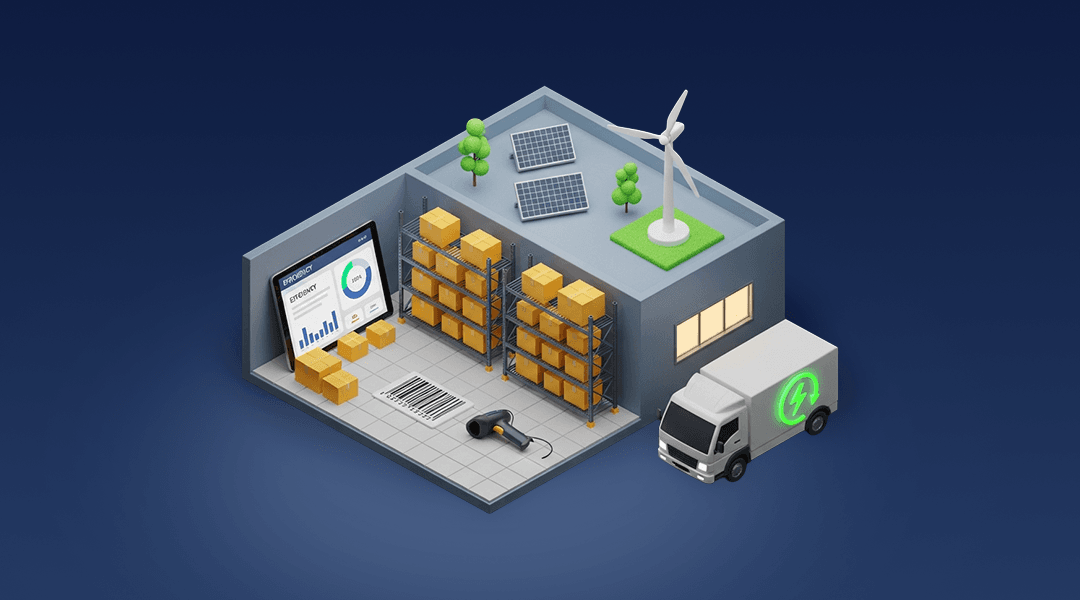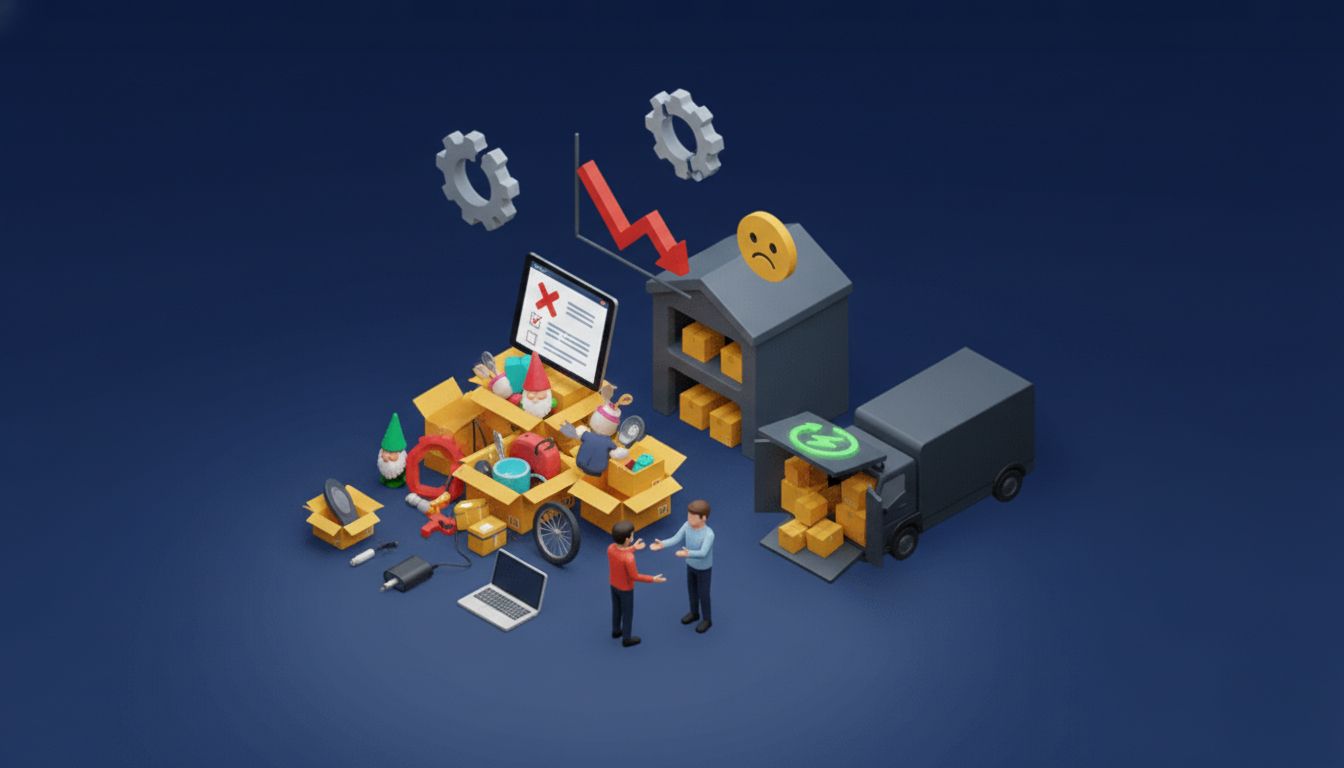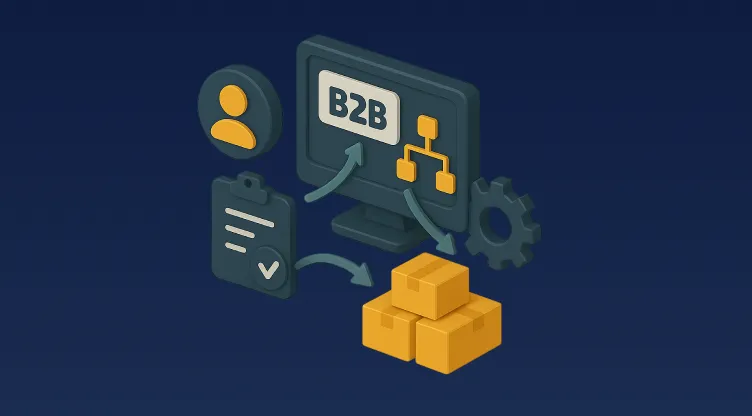Unifying OMS, WMS, and TMS: Real-Time Logistics for Saudi Companies

Table of Contents
Fast Take: What Logistics Leaders Need to Know
- A unified dashboard integrates your OMS, WMS, and TMS systems into a single real-time interface.
- It allows logistics companies in Saudi Arabia to manage orders, warehouses, and transport from one screen.
- These dashboards reduce errors, speed up fulfilment, and give real-time inventory visibility.
- Systems like Omniful enable dynamic routing, inventory tracking, and delivery automation designed for the MENA market.
- Businesses switching to unified dashboards see a rise in operational efficiency and customer satisfaction.
Why Logistics Still Operates in Silos — and Why It Shouldn’t
In today’s hyperconnected commerce world, it's surprising how disconnected logistics systems can be. Many companies still manage their orders (OMS), warehouses (WMS), and transport (TMS) through separate tools. These siloed systems cause delays, data mismatches, and missed delivery windows.
In Saudi Arabia, where logistics is growing rapidly due to Vision 2030, this disconnection becomes costly. Businesses struggle to keep up with rising online orders, rapid fulfilment demands, and last-mile delivery complexities. Whether you're a retailer in Riyadh or a 3PL in Dammam, visibility and coordination are now non-negotiable.
What is a Unified Logistics Dashboard?
A unified dashboard brings together your core logistics operations — order, warehouse, and transport management — into a centralised, real-time platform.
Think of it as a logistics control room.
Rather than jumping between different apps or systems to check an order status, view stock availability, or assign a delivery route, your team sees it all in one place.
Key Components Integrated:
- OMS (Order Management System): Manages online, in-store, and marketplace orders.
- WMS (Warehouse Management System): Tracks stock movement, bin-level inventory, and fulfilment status.
- TMS (Transportation Management System): Manages drivers, shipments, delivery routing, and proof of delivery.
By combining these, logistics managers can track every item from shelf to shipment — in real time.
Why This Matters for Saudi Arabia’s Logistics Boom
Saudi Arabia’s logistics market is expected to reach SAR 71.6 billion by 2026. Much of this growth is being driven by eCommerce, retail digitisation, and government investment in supply chain infrastructure.
For logistics firms and retailers, this means:
- Faster turnaround times
- Tighter inventory controls
- Seamless multi-channel fulfilment
But legacy systems aren’t built for this. They're slow to adapt, expensive to modify, and hard to scale.
The Need for Localisation
Solutions must align with local realities:
- Arabic interfaces
- ZATCA-compliant invoicing
- Integration with Zid, Salla, and local delivery networks
- Heat-ready hardware for warehousing environments
This is where cloud-native unified dashboards designed for MENA markets come in.
What Makes a Great Unified Dashboard?
Not all dashboards are equal. Here’s what logistics leaders should look for:
Real-Time Visibility
You should be able to view inbound shipments, on-hand stock, order queues, and delivery statuses instantly.
Mobile-First Interface
In Saudi warehouses and delivery routes, mobile apps (iOS, Android) allow teams to work on the go — scanning barcodes, picking orders, or updating shipment status in real-time.
Automation
From auto-assigning delivery zones to recommending the best shipping provider based on speed or cost, automation reduces manual work and increases consistency.
Smart Inventory Allocation
Link your sales channels (like Noon or Amazon.sa) and allocate stock based on demand patterns and hub capacity.
Custom Branding
Your unified dashboard should reflect your brand — from dashboards to packing slips — for a seamless client experience.
Case in Point: Unified Dashboards in Action
Here’s a real-world scenario from a Saudi-based D2C brand operating across the Kingdom:
Before:
- Inventory scattered across multiple warehouses.
- Orders coming from Zid, WhatsApp, and in-store purchases.
- Warehouse staff manually updated stock via spreadsheets.
- Dispatch team used a separate app for drivers.
After:
- All sales channels synchronised into one OMS.
- WMS updated stock levels instantly after each pick.
- Drivers received optimised routes based on real-time traffic via TMS.
- Customer received delivery within 2 hours in Riyadh — with real-time tracking.
Result: Fulfilment accuracy improved to 99.8%, with reduced delivery delays and a sharp drop in customer complaints.
Benefits That Matter for MENA Logistics Firms
Let’s break it down into measurable value:
| Business Function | Problem Without Integration | Result With Unified Dashboard |
|---|---|---|
| Order Management | Order delays, duplicate entries | Single source of truth across channels |
| Inventory Control | Stockouts, overstocking | Bin-level tracking in real-time |
| Fleet Operations | Delivery delays | Route optimisation & live tracking |
| Customer Service | Order status unclear | Customers receive live updates |
And when all systems talk to each other? That’s when supply chain magic happens.
Omniful: Born in Riyadh, Built for the Region
Unlike international platforms that require heavy customisation, Omniful offers a unified logistics solution tailored to the Middle East.
Core Benefits:
- Modular Design: Choose what you need — OMS, WMS, TMS, POS, or all combined.
- AI-Powered Analytics: Predict demand spikes and route bottlenecks before they happen.
- Compliance Ready: With ZATCA, local taxes, and shipping regulations.
- Multi-Hub Ready: Manage fulfilment from multiple dark stores or warehouses across cities.
- Arabic Support: UI, invoices, and documentation available in Arabic.
Whether you're shipping from Riyadh to Khobar or managing next-day delivery in Jeddah, Omniful provides visibility and speed that legacy ERPs simply cannot.
Actionable Tips to Get Started
Evaluate Your Current Tech Stack
Map your existing OMS, WMS, and TMS tools. Are they siloed? Are they updated in real time?
Define Your Business Goals
Are you aiming to reduce delivery time? Improve pick accuracy? Or consolidate operations?
Choose a Scalable Platform
Look for cloud-native systems that grow with your business — especially important for businesses planning GCC expansion.
FAQs
Q: Can I connect Omniful’s dashboard to my existing ERP?
A: Yes. Omniful is modular and API-first. It complements existing ERPs without replacing them.
Q: Is it suitable for non-retail logistics companies?
A: Absolutely. 3PL providers, cold chain operators, and even pharma distributors use unified dashboards.
Q: What’s the cost of switching?
A: Typically, firms recover their investment within 3–6 months through saved man-hours, faster fulfilment, and fewer delivery issues.
Final Thoughts
If you're still toggling between three different systems to track orders, update stock, and manage deliveries — you're not just wasting time. You're losing money.
A unified dashboard is not a luxury anymore. For logistic companies in Saudi Arabia competing in a high-demand, high-speed market, it's a competitive necessity.
The question is no longer if you should integrate your logistics data — but how soon you can make it happen.























